1451. godina
1451. g. (Hotoku 3, 7th month ) A delegation from
the Ryukyu Islands arrives for the first time in Heian-kyo
(Kyoto). Mention of this diplomatic event is among the
first of its type to be published in the West in an 1832.
French version of Sangoku Tskran Zusetsu (An
Illustrated Description of Three Countries) by Hayashi Shihei.
1451. g. (Hotoku 3, 8th month )
Sogun Yoshihori causes a letter to be sent to the Emperor of China.
1453. g. (Kyotoku 2, 6th month)
The name of the Shogun, "Yoshinari", was
changed to Ashikaga Yoshimasa, which is the
name by which he is more commonly known in modern times.
1454. g. (Kyotoku 3) Ashikaga Shigeuji
orchestrated for the killing of Uesugi Noritada, thus
beginning a series of conflicts for control of the Kanto;
and this event would come to be known as the
Kyotoku no Ran.
1455. g. Kyotoku no Ran
vidi,
Kyotoku no Ran - Sword World
1456. g. (Kosho 2, 3rd month)
Ashikaga Yoshimasa visited Iwashimizu Shrine;
and all the officials of the Daijo-kan joined him in
going there.
1456. g. (Kosho 2, 8th month)
The father of Emperor Go-Hanazono,
Fushimi-no-miya-shinnM Sadafusa, died at age 85.
1457. godina
1457. g. (Choroku 01) Taro Sayemon attempted to
retrieve the Sacred Jewel for Emperor Go-Hanazono;
and he actually did manage to gain possession of it
for a brief time. A counterattack prevented the success
of this dangerous mission in Yoshino.[3] In 1443.
(Kakitsu 3, 23rd day of the 9th month), an armed group
of rebels penetrated the palace defenses. A fire was
started and one of the men sought to kill Emperor
Go-Hanazono, but the emperor escaped. However,
the intruders managed to steal the Sacred Treasures –
the mirror, the sword and the jewel. Later, a guard
found the mirror and a priest found the sword, but
the location of jewel was not known until the 8th
month of Bunnan gannen.
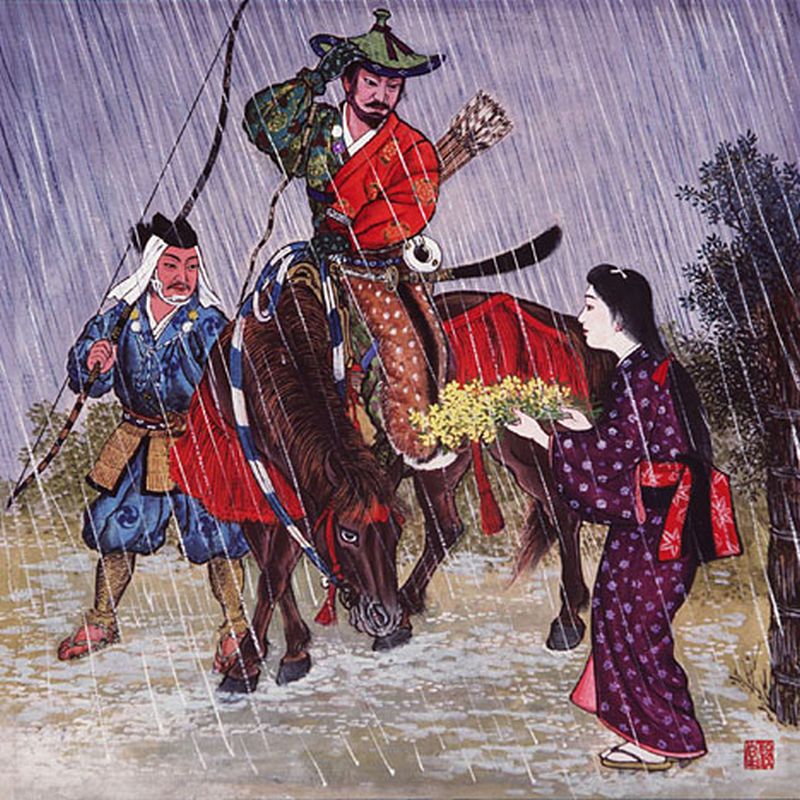
gore, Ota Dokan (1432-1486)
He is general of the latter term of Muromachi era,
the Edo castle (vidi dole) was built in 1457. The scene
where he has requested taking shelter from the rain to
the woman is drawn in this picture.
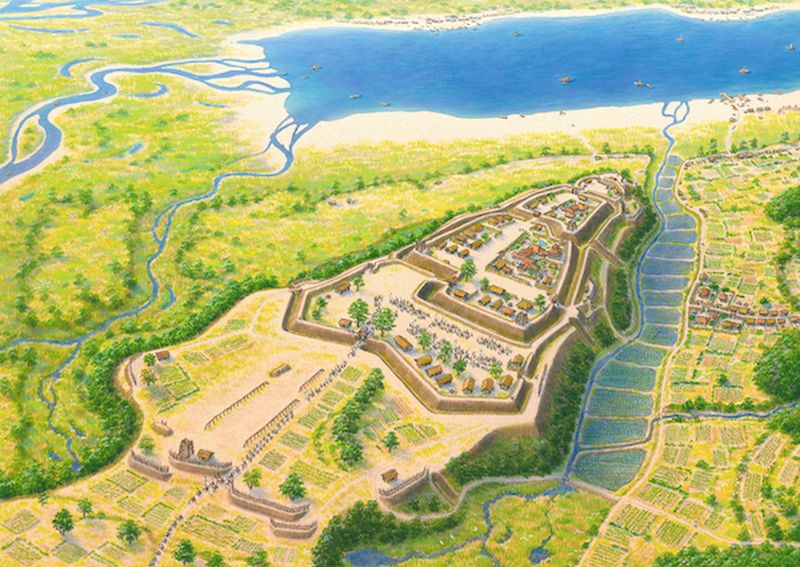
In the early days of the Warring States period, Edo
Castle during the Ota Dokan period was
reconstructed by imagining it with Mr. Nishimata's
proof. It is estimated that Edo Castle at that time was
the current Edo Castle Honmaru and used the tongue-
shaped plateau facing the Hibiya Inlet. After that,
renovations by Hojo and Tokugawa have been
repeated, and although I can only imagine the
concrete appearance, Mr. Nishimata dropped the
castle construction pattern of Mr. Uesugi in the early
Sengoku period into the topography of Edo Castle,
and restored it with reality. I presented a plan
and illustrated it.
vidi, kagawa gallery
1458. g. (Choroku 2, 8th month) The Sacred Jewel
is retrieved from the former Southern Court. It is
returned to Kyoto to join the other Sacred Treasures
which comprise the Imperial Regalia of Japan.
1459. g. (Choroku 3) Shogun Ashikaga Yoshimasa
provided a new mikoshi and a complete set of robes
and other accouterments for this festival on the
occasion of repairs to the Atsuta Shrine in the
457-1459 (Choroku 1-3)
60-te godine 15. st. poretka kenmon bile su pune nereda.Svetišta na imanjima shoen
bila su osiromašena i očajna,bakufu nije bio siguran u vlastitom gradu i nije imao nikakvu
vlast nad daimyoima,glavne posjede daimyoa razdirale su frakcijske borbe i ugrožavali
ratnici na nižim položajima,razne druge društvene skupine bile su sve bolje organizirane i
mogle su silom štititi svoje interese.Nastupilo je stanje potpunog političkog laissez faire.
vidi, Totman,nav. dij.,str. 168;
1460. g. (Kansho 1, 9th month) Wakae Castle in
Kawachi Province was destroyed when Hatakeyama
Yoshinari (1437-21 January 1491) was forced out of it.
1461. g. (Kansho 2) Kansho famine was ceased.
1464. g. (August 21; Kanshoo 5, 19th day
of the 7th month)
Go-Hanazono resigned his throne in favor of his son,
who would be known as Emperor Go-Tsuchimikado.
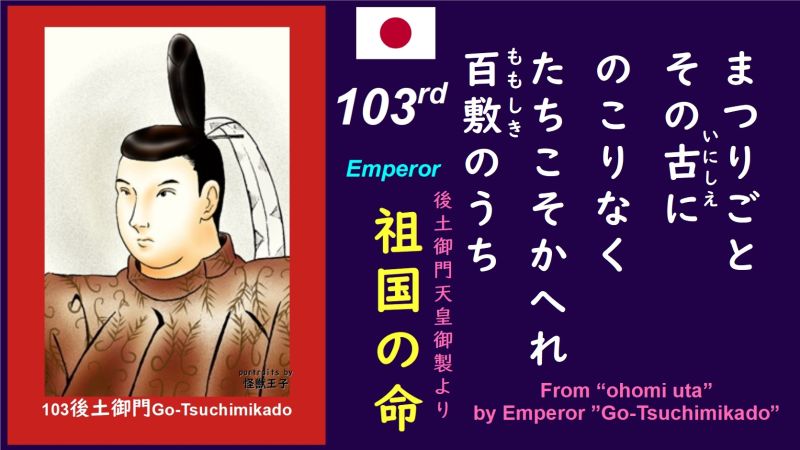
1464-1500. g. Vladao je 103. car Go-Tsuchimikado (1442-1500).

gore, obiteljsko stablo carske obitelji od 100. cara Go-Komatsua koji je ujedno i
6. i posljednji car sjeverne dinastije do 106. jap. cara Ogimachi-ja
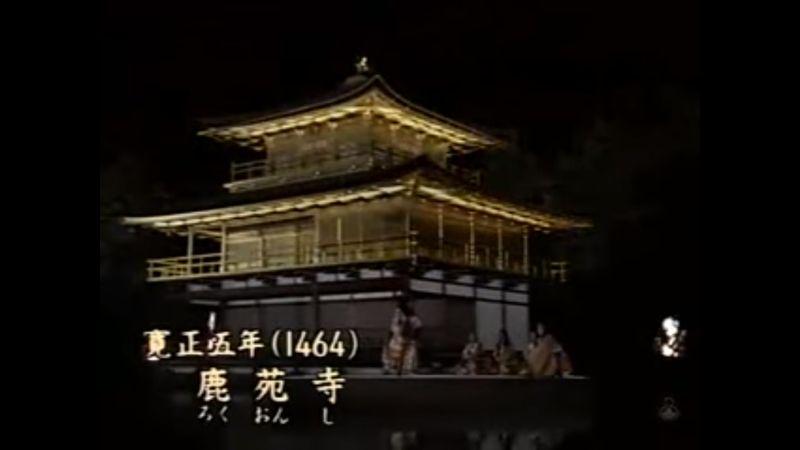
gore & dole, uprizorenje Noh drame 1464, ispred
Zlatnog paviljona (Kinkaku-ji), za shoguna Ashikagu
Yoshimasu; Zlatni paviljon (Kinkaku-ji ili Rokuon-ji) zen
budistički je hram, izgrađen 1397. za umirovljenog
shoguna Ashikagu Yoshimitsu a (živio, 1358-1408;
shogun, 1368-1394); nakon Yoshimitsuove smrti
Zlatni paviljon predan je zen školi; 1950. godine jedan
zen redovnik se zapalio u njemu te su obojica izgorijeli;
hram je ponovo podignut 1955. godine, Yukio Mishima
napisao je roman a snimljen je i igrani film o tom događaju;
1466. g. (Bunsho 1, 1st month) Dainagon Ashikaga
Yoshimi, brother of the shogun Ashikaga Yoshimasa,
was promoted to the second rank of the second class
in the Imperial court hierarchy.
1466. g. (Bunsho 1, 1st month)
Minamoto-no Mitsihisa was replaced as udaijin by
dainagon Fuijwara no Matsatsugu.

Sengoku period, razdoblje zaraćenih zemalja, 1467-1590

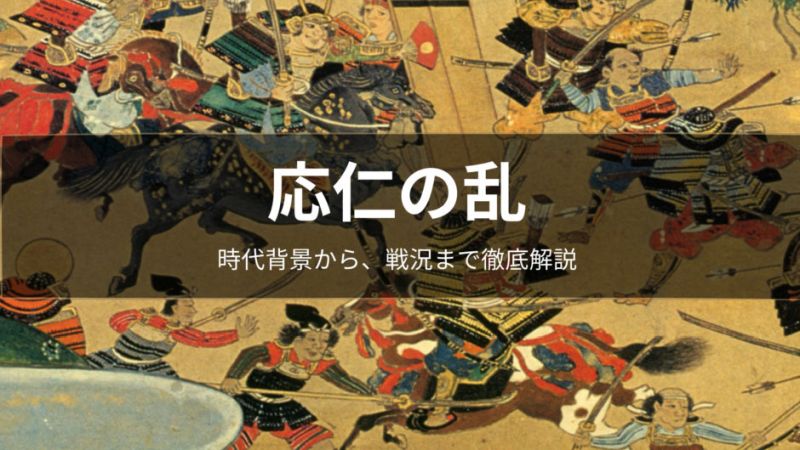
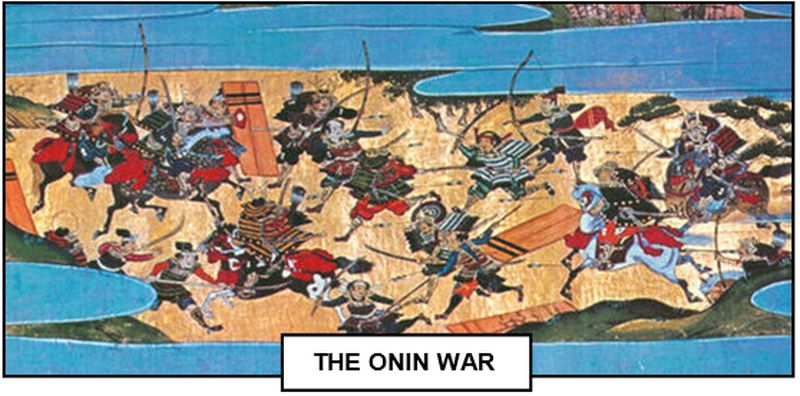
1467-1477. g. Traje Oninski rat čime započine period Sengoku tj. "vrijeme
zaraćenih država" i traje do prve polovice 17. st...uvjetno rečeno...
vidi za Onin rat,
Totman, nav. dij., str. 168;
Onin War - Sword World
vidi za Sengoku jidai (period),
Sengoku period, wikipedia
# vidi, važne face Sengoku perioda
gore, Hosokawa Kumamoto (1430-1473), jedan od najodgovornijih za Onin rat
Events of the Onin era
The Onin War This conflict began as a controversy over
who should follow Ashikaga Yoshimasa as shogun after
his retirement – whether it would be his brother (Yoshimi)
or his son (Yoshihisa); but this succession dispute was
merely a pretext for rival groups of daimyos to fight in a
struggle for military supremacy. In the end, there was no
clearcut winner. The complex array of factional armies
simply fought themselves into exhaustion.
1467. g. (Onin 1, 1st month) Yamana Sozen and Hatakeyama Yoshinari took up positions around the Muromachi-dono, the Ashikaga residence in Heian-kyo where the Shogun made his headquarters. They sent for Ashikaga Yoshimi, and they also invited former-Emperor Go-Hanazono and Go-Tsuchimikado to come themselves to Muromachi to witness for themselves that Hosokawa Katsumoto and Hatakeyama Michinaga would be put to death. For his part, Yoshimi first tried to ameliorate the escalating situation. Failing that, Yoshimi ordered Yoshinari to kill Masanaga, but Yoshinari was overpowered and Masanaga fled the capital. These events caused Souzen and Yoshinari to feel afraid of what might happen next.
1467. g. (Onin 1, 1st month)
The nadaijin Sayensi-no Saneto was replaced by
Hino-no Katsumitsi.
1467. g. (Onin 1, 2nd month)
Shiba-no Yoshikado became kanrei; and from this moment forward, the confidence and activities of Katsumoto ceased entirely. He didn't go out at all, and he began to regret that he hadn't joined Masanaga. At the same time, Souzen and Yoshinari despaired as they secretly occupied themselves with preparations for armed confrontation. They informed their clans of their plans, and they began to believe that with support from outside the capital, it would be possible to surmount any number of obstacles.
1467. g. (Onin 1, 5th month)
Nijo Mochimitsi was removed from his role as kampaku,
and IchijM Kaneyoshi became his successor.
___________________________________________________
Higashiyama-dono
The emperor honored Yoshimasa's villa with a special
name – Higashiyama-dono. Construction begins on
the Silver Pavilion, but the work is interrupted by a
range of disruptions associated with the Lnin War.
Significant dates in this evolving crisis were:
1460. g. (Choroku 3) Yoshimasa initiated planning for construction of a retirement villa and gardens as early as 1460; and after his death, this property would become a Buddhist temple called Jisho-ji (also known as Ginkaku-ji or the "Silver Pavilion").
1482. g. (February 21; Bunmei 14, 4th day of the 2nd month) The long-delayed construction of the "Silver Pavilion" is actually commenced.
# izvor, wikipedia (eng)
___________________________________________________
1468. g. (Bunmei 2, 7th month) IchijM Kanera (1402–1481)
was relieved of his duties as kampaku.
1471. g. (January 18; Bunmei 2, 27th day of
the 12th month ) The former Emperor Go-Hanazono died at age 52.
1473. g. (April 16; (Bunmei 5, on the 19th day of
the 3rd month) Yamana SMzen died at age 70
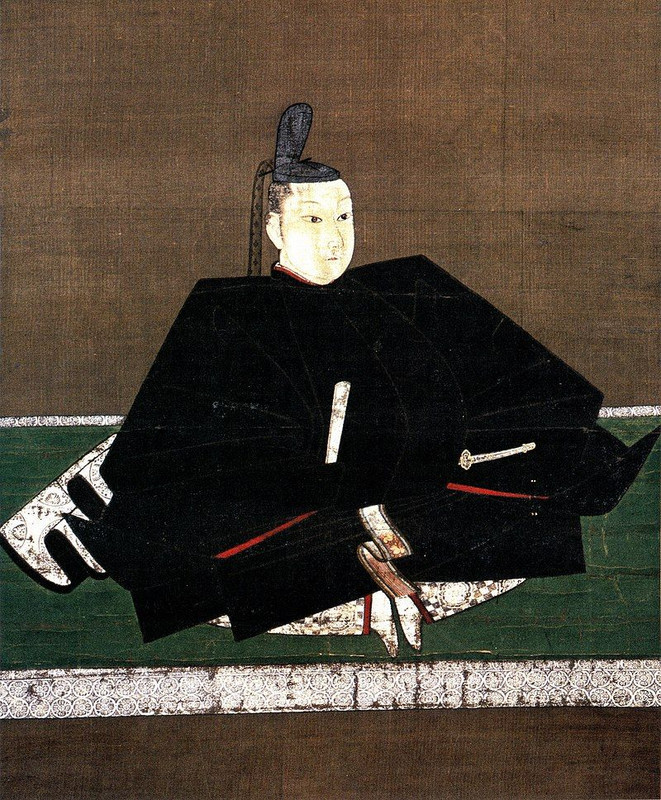
1473-1489. godine Ashikaga Yoshihisa (1465-1489., gore) bio je 09. Ashikaga shogun.
Yoshihisa je bio sin 08. shoguna Yoshimase (1435-1490, dole) i Hino Tomiko (1440-1496).
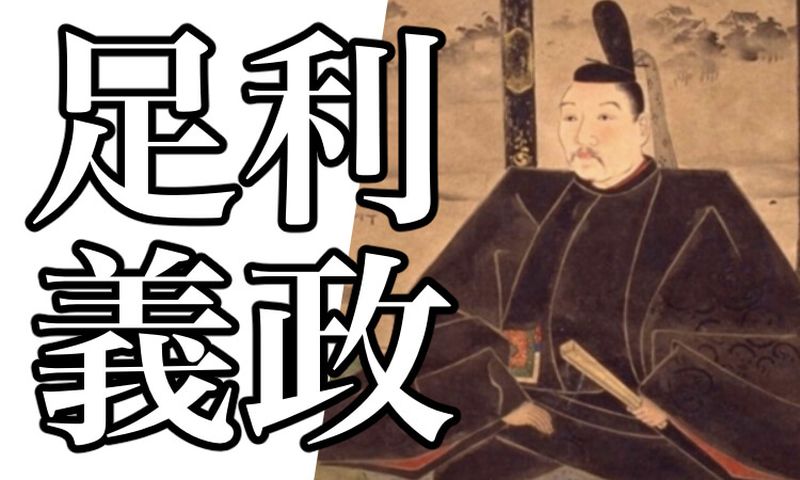

gore & dole, obiteljsko stablo Ashikaga klana
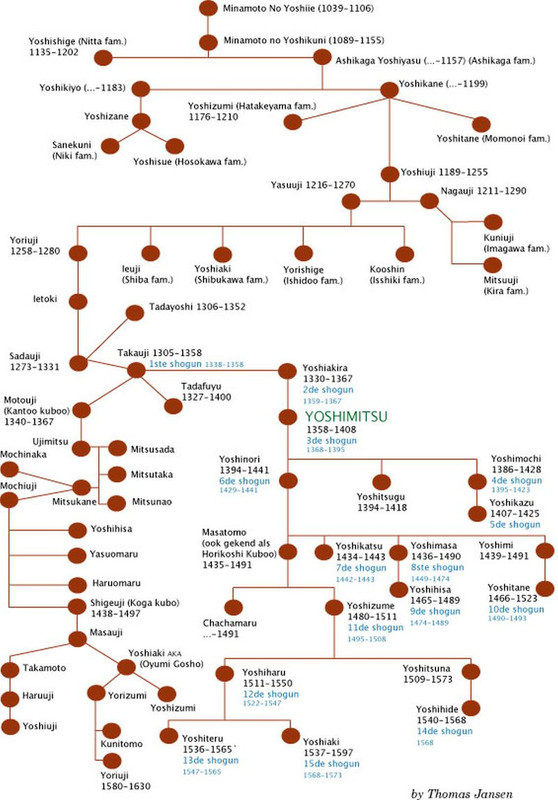
1478. g. (Bunmei 10) Ichijo Kanera published Bunmei
itto-ki (On the Unity of Knowledge and Culture) which
deals with political ethics and six points about the
duties of a prince
1479. g. Asakura Toshikage (1428-1481) porazio Shiba klan i preuzeo kontrolu
nad Echizenom. Neki su ga prozvali prvim «Sengoku daimyom».
Osnivač je klana Asakura .
1482. g. (February 21; Bunmei 14, 4th day of
the 2nd month)Construction of Ashikaga Yoshimasa's
Silver Pavilion commenced.
1487. g. (Chokyo 1) Takatskasa-no Masahira was
replaced as kampaku by the former naidaijin Kiyosho-no
Masatada.
1487. g. (Chokyo 1, 8th month) Udaijin Oe-no mikado
Nobukatsu died at age 42.
1487. g. (Chokyo 1, 8th month) Shogun Yoshihisa
led a large army against Rokkaku Takayori (also
known as Rokkaku Tobatsu), the daimyo of
southern Omi Province.
vidi, Chokyo Ran - Sword World
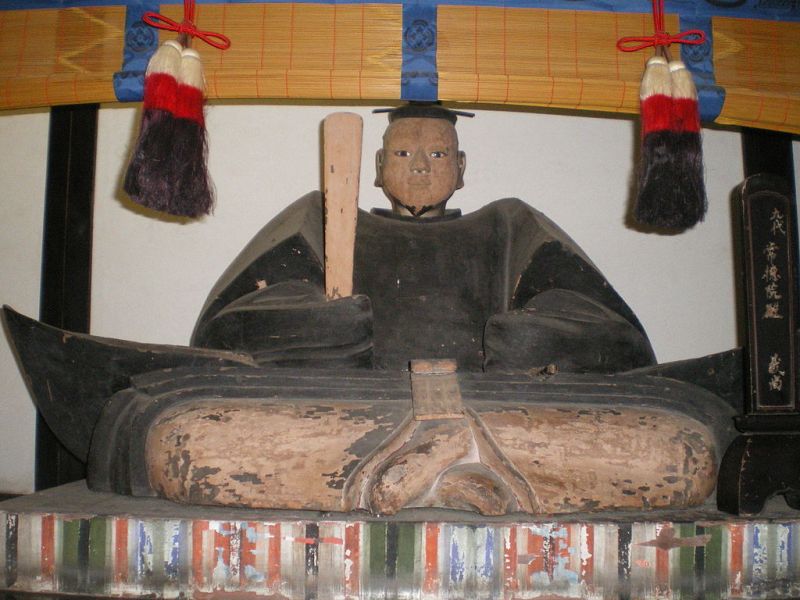
1489. g. (April 26; Entoku 1, 26th day of the 3rd month)
The 09. shogun Yoshihisa (gore) died at age 25 while
leading a military campaign in Omi Province. He had
led the shogunate for 18 years. His father, the former
Shogun Yoshimasa, was strongly afflicted by his
death; and because of this unanticipated development,
he was moved to reconcile with his brother, Yoshimi.
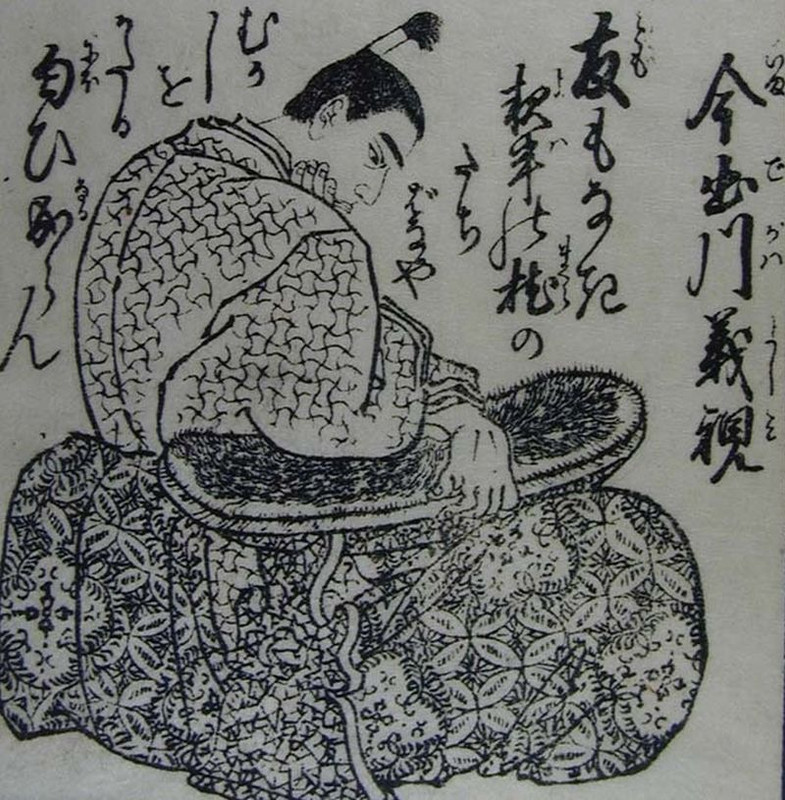
gore, Ashikaga Yoshimi (1439-1491)
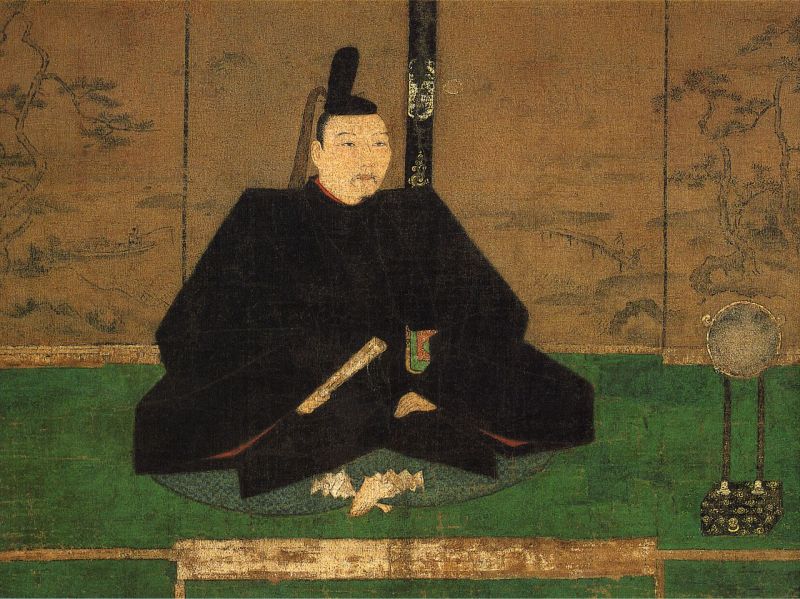
1490. g. (January 27; Entoku 2, 7th day of the
1st month) The former shogun Yoshimasa
died at age 56.
1490. g. (Entoku 2, 7th month) Ashikaga Yoshimura (known as Ashikaga Yoshitane after 1501), nephew of Yoshimasa, is proclaimed as shogun at age 25.
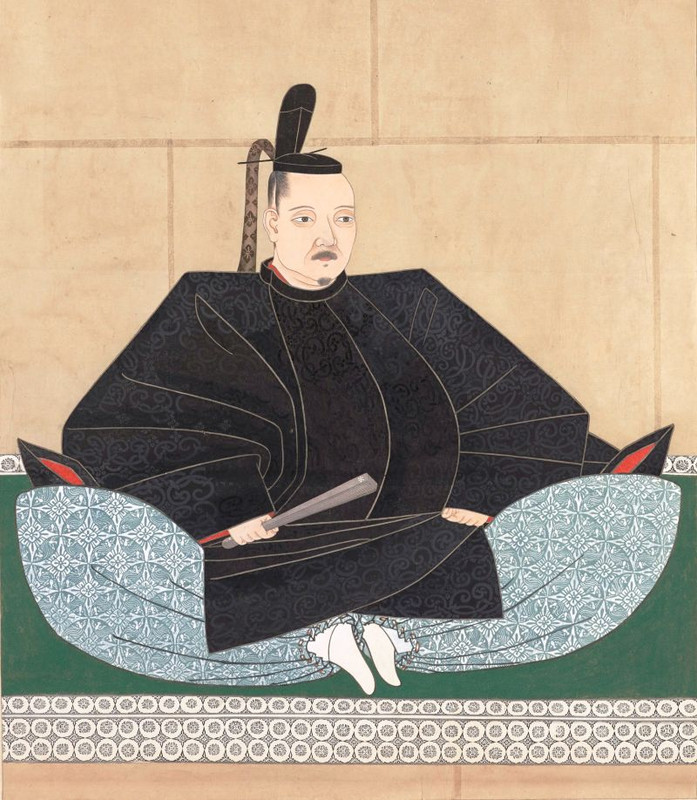
1490-1493. godine vladao je 10. Ashikaga shogun Yoshitane (1466-1523)
vidi za Yoshitanea, Yabai.com

gore & dole, obiteljsko stablo Ashikaga klana

1492. g. (Meio 1, 8th month) Shogun Yoshimura led an army against Takayori in Omi Province. He laid siege to Mii-dera. Takayori saved himself by escaping in the slopes of Mount Koka. Then, Shogun Yoshimura returned to Heian-kyo.
1492. g. (Meio 2, 1st month) The kampaku Ichijo Fuyuyoshi was named daijo-daijin.
1492. g. (Meio 2, 2nd month) Shogun Yoshimura,
accompanied by Hatakeyama Masanaga, marched
against Kawachi Province, with plans to capture and
put to death Hatakeyama Toshitoyo, the son of Yoshinari.
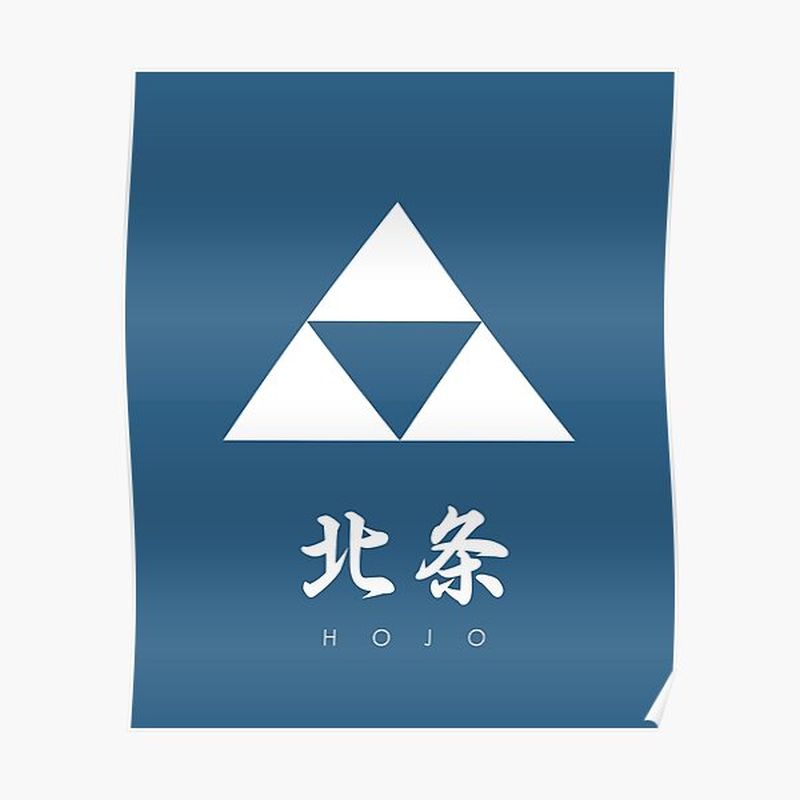
1493. g. Pojava Hojo klana II na društveno političko vojnoj sceni.
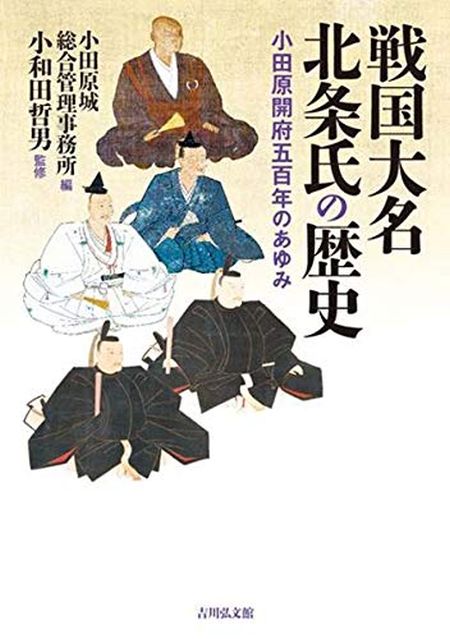
# članovi Hojo klana I & II

gore obiteljsko stablo Hojo klana II
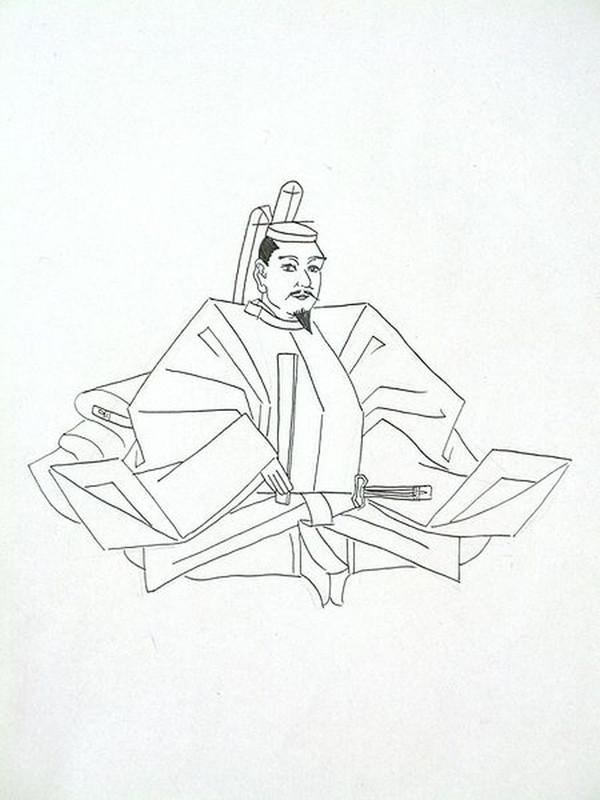
1494-1508. godine vladao je 11. Ashikaga shogun Yoshizumi (1481-1511).
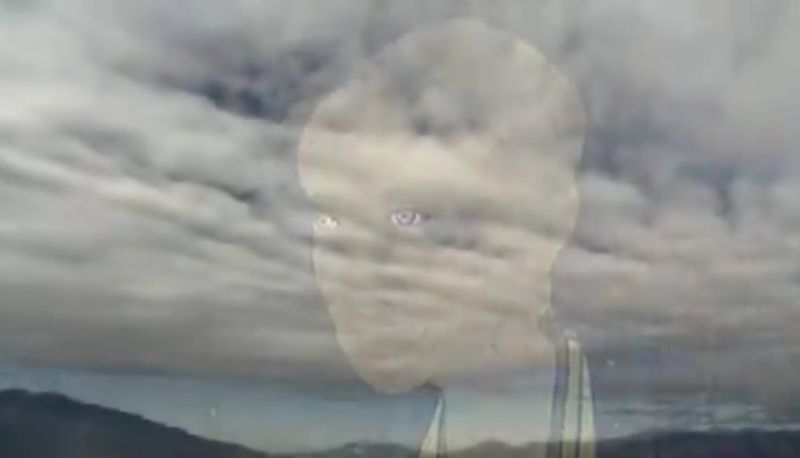
1494. ili 1498. - 1574. Živio je Takeda Nobutora, lider
Takeda klana & otac Takede Shingena (1521-1573)
1495. g. (September 12; Meio 4, 24th day
of the 8th month) Earthquake at Kamakura, 7.1 on
the Surface wave magnitude scale (Ms).
1497-1571. g. Živio je Mori Motonari , daimyo.
gore, oklop (ratno odijelo) Mori Motonarija
gore, grb klana Mori
gore, ratna zastava Mori Motonarija
1498. godina
1498. g. (July 9; Meio 7, 20th day of the 6th month)
Earthquake in the Enshk-nada Sea, 6.4 Ms/.
1498. g. (September 20.; Meio 7, 2nd day
of the 7th month) Earthquake in the Enshk-nada Sea
and also on that same day, another earthquake in
Nankaido, 7.5 Ms.
1500. godina
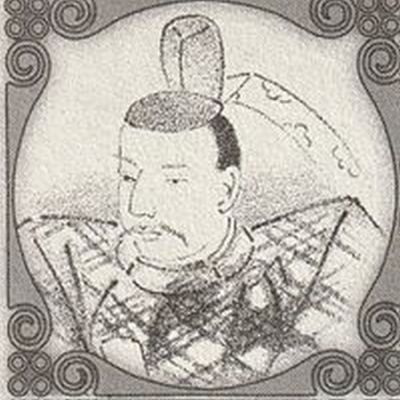
1500-1526. g. Vladao je 104. car Go-Kashiwabara
(1464-1526).

gore, obiteljsko stablo carske obitelji od 100. cara Go-Komatsua koji je ujedno i
06. i posljednji car sjeverne dinastije do 106. jap. cara Ogimachi-ja

O neugodnom carskom položaju 1500-te godine govorio
je Hosokawa Masamoto (1466-1507), sin Hosokawe
Katsumota (1430-1473) i kanrei diktator koji je tada
vladao carskom prijestolnicom Kyotom.
Zamoljen za novčanu pomoć pri krunidbi kazao je:
"Čak i ako bude krunidbe, nitko neće smatrati carem
onoga koji to u biti i nije."
Na kraju je odbio platiti, a car je okrunjen nakon
20 godina kada su nađena sredstva. U stotinu
dvadeset i dvije godine, od 1464. do 1586., četiri su
nevažna cara vladala do svoje smrti (Go-Tsuchimikado,
Go-Kashiwabara, Go-Nara i Ogimachi).
vidi, Totman, nav. dij., str. 169;
|